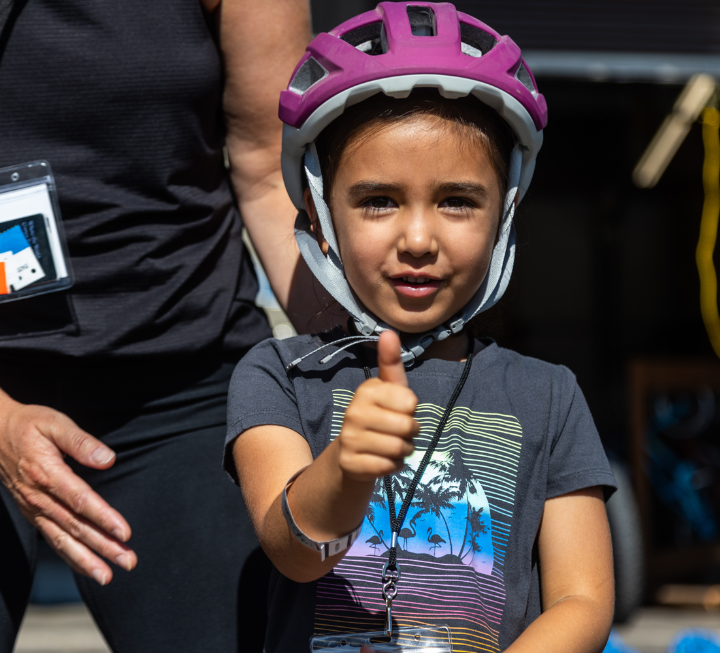Most U.S. school districts have closed schools until the end of the 2019-2020 school year due to concerns surrounding the new coronavirus pandemic, while others are starting to reopen. Many families, educators, and school districts are experiencing substantial strain and stress at this time; however, this national emergency does not mean that education stops for children with individual education or 504 plans.
While some districts have instituted distance learning plans for students to continue their education from home, it is unclear how accessible or individualized these plans are for many students with IEPs or whether they provide your child with an appropriate education as required by federal laws.
Here we provide you with an overview of the impact of school closures on your child’s public education during the COVID-19 pandemic, what you can do to help your child receive a free and appropriate public education during remote school operation, and considerations after schools reopen.
Note: You must be familiar with the IEP or 504 process before reviewing this guide. Please take the time to review our step-by-step IEP guide, as well as our training webinars, if you do not understand the IEP process.
This content is informational purposes only and should not be relied upon as legal advice in any way. If you have questions about your child’s educational legal rights, contact an experienced attorney.
By now, most districts have policies, plans, or guidance in place which address school closures and distance learning. Distance learning may include general education with accommodations or special education and related services provided virtually, online, telephonically, or through home visits. Unfortunately, the Individuals with Disabilities Education Act (IDEA), Section 504 of the Rehabilitation Act of 1973 (Section 504), and Title II of the Americans with Disabilities Act (ADA) do not specifically address schools closing for an extended period of time.
These plans are typically identified by different names, including distance learning plans, remote learning plans, or contingency learning plans.
You should first familiarize yourself with local, state, and federal guidance, policies, and procedures related to the COVID-19 pandemic.
-
- Local: Your school district’s policies, procedures, and any guidance documents the district should be published online. If the school district’s website does not have this information, ask your child’s teacher to send them to you;
-
- State: Find your state Department of Education’s COVID-19 information page. State-by-state policies and guidance on school closures, distance learning, and reopening dates are being tracked by Education Week here;
-
- Federal: The U.S. Department of Education’s website has a COVID-19 information page at https://www.ed.gov/coronavirus. Important guidance documents you should familiarize yourself with are:
Prior Written Notice
Some school districts are sending parents prior written notice either as part of the distance learning plan or as a separate document. Prior written notice is required by the Individuals with Disabilities Education Act if there is a change of placement. At this time, it is unclear whether distance learning is considered a change of placement or a change in location (which does not require prior written notice).
If you disagree with any portion of the prior written notice, you can state your objections in a letter and send to the school team. Some states require that you file for due process or mediation within a certain amount of days to preserve your child’s rights.
Once you have familiarized yourself with the policies noted above, revisit your child’s IEP or 504 plan. Make a quick list of the following:
- # of minutes of specially designed instruction per month, including 1:1 instruction time;
- supplementary aids and services your child is provided monthly;
- # of minutes of related services (e.g. physical therapy, occupational therapy, speech therapy) your child is provided monthly;
- accommodations; and,
- modifications.
If your child has an IEP, reach out to your child’s teachers to ask how specially designed instruction, supplementary aids and services, accommodations and modifications, and related services will be provided during school closures in distance learning plans. If your child has a 504 plan, ask how the general education will be provided and what accommodations will be made for distance learning. Make of note of how this differs from the current IEP or 504 plan.
Your child has a legal right to access remote learning in an equitable way. Services, programs, and activities that are held online must be accessible for all individuals, including those with disabilities, unless the school district can provide alternative access that is equally effective.
Schools must consider individuals who are blind, have low vision, have mobility disabilities, are deaf, are hard of hearing, or have other disabilities such as seizure disorders or cognitive disabilities. However, there may be challenges with accessibility and online learning for some students.
More information:
- Online Education and Website Accessibility (webinar): U.S. Office of civil Rights short webinar on online education and website accessibility.
- Equitable Access to Remote Learning Is Paramount (blog post)
Hemianopia, quadranopia, and computer screen, tablet, and video viewing
Distance learning, whether live or which includes watching video or presentations, may be difficult for children with homonymous hemianopia after hemispherectomy or other surgeries which remove or disconnect an occipital lobe. Children with quadranopia after temporal lobe resections may also have difficulty with distance learning.
Research in adults who have homonymous hemianopia after stroke show that many reported at least ‘some’ difficulty watching TV or watching video on a computer or portable device. Your child’s school district should work with you to ensure that your child has access to visual distance learning. Accommodations, modifications, and special education may be included in an IEP or 504 plan amendment. These may include:
- Time for video playback and head turn are some things adults with hemianopia do to improve viewing videos;
- Content guide for video or presentation instruction that includes the location of information in the frames. This may help your child find the location in the video or presentation that contains important information;
- Time for compensatory scanning or gaze shift into the blind field;
- Highlighting important content in presentations, such as with virtual pen lights, highlighters, arrows, or other methods.
Be sure to document whether these techniques improve your child’s viewing ability and access to distance instruction.
It is estimated that typically developing children will experience regression in reading and mathematics during COVID-19 school closures.
“Preliminary COVID slide estimates suggest students will return in fall 2020 with roughly 70% of the learning gains in reading relative to a typical school year. However, in mathematics, students are likely to show much smaller learning gains, returning with less than 50% of the learning gains and in some grades, nearly a full year behind what we would observe in normal conditions. “ Kuhfeld, M. & Tarasawa, B. (2020). The COVID-19 slide: What summer learning loss can tell us about the potential impact of school closures on student academic achievement. NWEA.
It is likely that regression may be even worse for children with disabilities. Understanding and document your child’s progress and regression will help you advocate for increased special education and related services, if needed, once schools reopen.
In order to monitor progress or regression, you need to know where your child is right now on IEP goals. If you don’t know, reach out to your child’s general education and special education teachers to get their input.
- Ask the teacher what your child’s benchmark levels are for reading and math. Examples of reading benchmark assessments are Lexile, Fountas and PInnell, Reading A-Z.
- Look at the common core state standards for your state and your child’s grade level.
- Take a look at your child’s goals and where they are in meeting them. Write up a statement of your child’s present levels of academic and functional performance (what are they able to do right now, what percentage of their goal is met, or what benchmarks have been achieved, etc.). Look at their academic, social and emotional learning, activities of daily living, executive functioning skills, and mental health skills such as coping mechanisms.
- Submit your summary to your child’s IEP team to establish a baseline.
Then, as you are distance learning with your child, keep a daily log and video record his/her performance.
- How is your child progressing in reading, writing, math, and other subjects?
- How often does he/she need to be redirected?
- How independent is he/she in completing their work?
- How often is he/she having seizures?
- What else are you noticing?
This is a rare chance for parents to see what’s happening on a day to day basis in terms of their child’s progress, rate of learning, ability to attend, and more. This could be an opportunity to be a more meaningful participant at your next IEP meeting, to say “I actually taught my child, and this is what I noticed he needs.”
- IEP Regression and Monitoring During Distance Learning | Templates – A Day In Our Shoes
- Service Delivery Log
Ideally, before implementing a change of placement or a change of services you would hold an IEP meeting. Because that may be impractical at this time, at the very least you should be monitoring your child’s progress (or regression) over the coming weeks/months.
Many school districts are offering online therapy, with some sending therapists to a child’s home to provide therapy with social distancing. Some services (such as speech therapy, counseling, or even occupational therapy) may be delivered successfully via remote video conferencing, whereas other services (such as physical therapy) may need to be made up once direct, in-person therapy resumes.
While these services may not fully address the child’s unique needs as outlined in the IEP, in order to prevent regression you may want to continue home-based therapy as much as possible. Ask your child’s therapists to provide a progressive home exercise program detailing which exercises to start with and how to build on them. Video sessions are great for things like jumping jacks, but for fine motor exercises parents will need to work directly with the child.
With younger students, virtual/home-based therapy will require a team effort with therapists, students, and their parents. Beyond direct therapy services, much can be done in the home through daily routines to help the child maintain and build their functional and adaptive skills.
If you are concerned about your child’s distance learning, you can send the school team a letter outlining your concerns.
- Keep it short. Use bullet points and short statements instead of lengthy paragraphs. They are easier to read.
- Keep it polite. You should raise issues respectfully and clearly. Consider carefully what you want those carrying out this plan to know, and how you want them to think of you and your child.
- Use facts. This is an emotional time for everyone; however, emotions can get in the way of an effective letter. Use only facts in your letter to the school.
Sample letters of parental concern:



